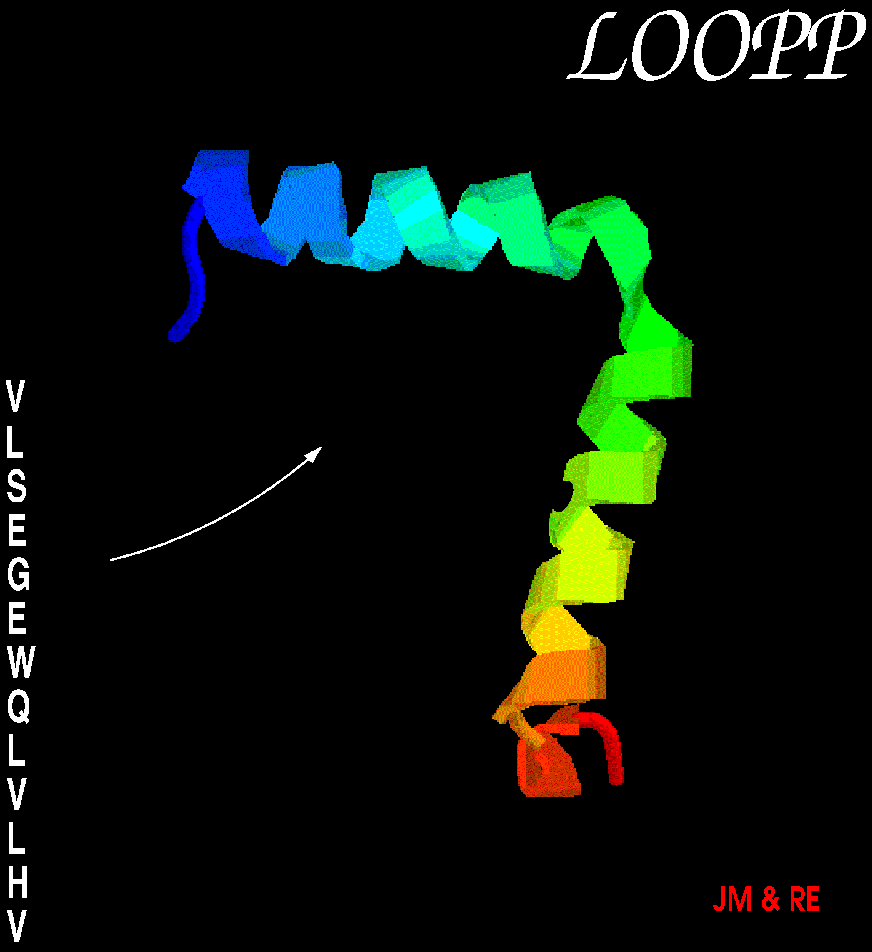
Learning, Observing and Outputting Protein Patterns (LOOPP)
The newest version of LOOPP can be used on our server at http://cbsuapps.tc.cornell.edu/loopp.aspx . The code below is NOT the newest version.
LOOPP is a fold recognition program based on the collection of numerous signals, merging them into a single score, and generating atomic coordinates based on an alignment into a homologue template structure. The signals we are using include straightforward sequence alignment, sequence profile, threading, secondary structure and exposed surface area prediction. (Secondary structure and exposed surface prediction program SABLE was developed in the group of our collaborator Professor Jaroslaw Meller). These individual signals are combined locally to create mixed models and globally to provide overall scores. Computations of scores to those that can be done quickly are performed for all proteins in our database and expensive scores (such as Z score calculations) are computed only for those that score highly with the "cheap" score.
Atomic models are then generated using an alignment produced by the scoring scheme and the Modeller program of Andrej Sali. The final atomic structure is evaluated by additional energy scores. The energies used, and the combination of individual scores are determined by a Mathematical Programming algorithm.
LOOPP references:
Octavian Teodorescu, Tamara Galor, Jaroslaw Pillardy, and Ron Elber, "Enriching the sequence substitution matrix by structural information", Proteins: Structure, Function and Bioinformatics, 54:41-48(2004)
Jaroslaw Meller and Ron Elber, "Linear Optimization and a double Statistical Filter for protein threading protocols", Proteins, Structure, Function and Genetics, 45,241-261(2001)
Dror Tobi and Ron Elber, "Distance dependent, pair potential for protein folding: Results from linear optimization", Proteins, Structure Function and Genetics, 41, 40-16 (2000).
SABLE references:
R. Adamczak, A. Porollo, J. Meller, Accurate Prediction of Solvent Accessibility Using Neural Networks Based Regression, Proteins: Structure, Function and Bioinformatics, to appear (2004).
A. Porollo, R. Adamczak, M. Wagner and J. Meller, Maximum Feasibility Approach for Consensus Classifiers: Applications to Protein Structure Prediction, CIRAS 2003 (conference proceedings).
http://sable.cchmc.org/sable_doc.html
- Tutorial and Documentation for original version - loopp2000
- Available platforms for original version - loopp2000
- Submit your sequence to our server
-
DOWNLOAD
(original version - loopp2000)
DOWNLOAD (new
version rewritten by Tamara Galor with a new mixed model
for threading)
DOWNLOAD (databases for the new version of LOOPP)
Information about potential functions and list of templates protein can be found here.
Optional Registration Form
Please complete this form if you are downloading software from the CBSU repository. We will notify you of updates and additions as they occur. You need only complete the form once.